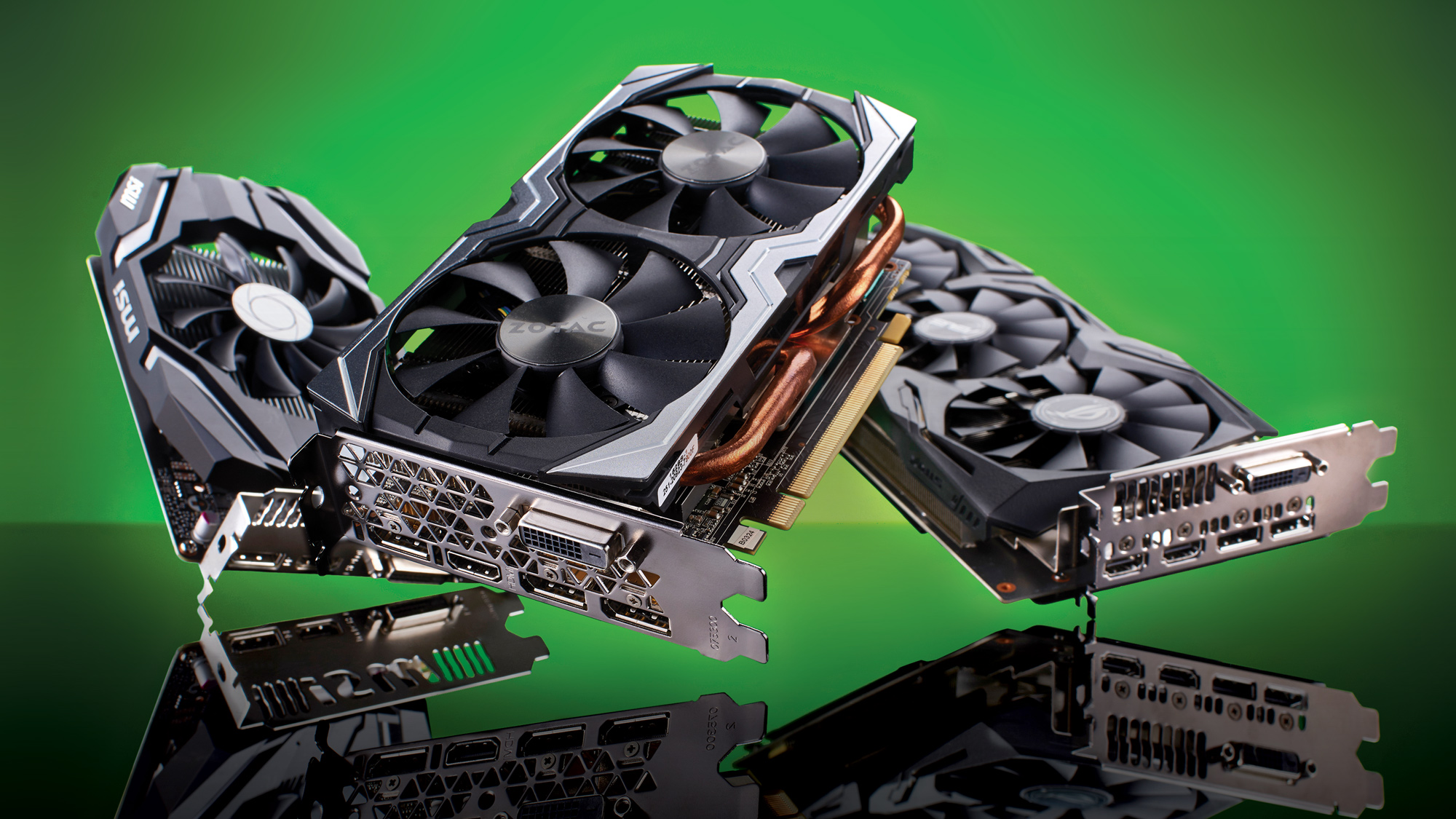What is a Graphic card?
A graphics card, also known as a video card or GPU (Graphics Processing Unit), is an expansion card that is installed in a computer to provide high-quality graphics rendering for tasks such as gaming, video editing, and other graphical-intensive applications. The graphics card is responsible for rendering images and videos and then outputting them to a display device, such as a monitor, TV, or projector.
A graphics card typically has its own processor and dedicated memory that is separate from the computer’s main system memory, allowing it to perform graphics-related tasks much more efficiently. Graphics cards can vary greatly in terms of performance and features and are often rated based on their ability to handle complex and demanding graphics tasks, such as rendering 3D graphics or running multiple displays simultaneously.
The Evolution of Graphics Cards
The evolution of graphics cards has been a fascinating journey, starting from simple 2D graphics cards to today’s high-end, powerful GPUs that can handle complex 3D graphics, machine learning, and other demanding applications.
The first graphics cards were introduced in the late 1970s and early 1980s and were primarily used for displaying basic 2D graphics, such as text and simple graphics. These early graphics cards were limited in their capabilities and often relied on the computer’s main processor for rendering graphics.
In the 1990s, graphics cards began to evolve rapidly with the introduction of dedicated graphics processors and dedicated video memory. These new graphics cards allowed for more complex graphics rendering and enabled the development of 3D graphics in games and other applications. One of the most significant developments during this time was the introduction of the first consumer-grade 3D graphics cards, such as the 3dfx Voodoo and Nvidia RIVA 128.
In the early 2000s, graphics cards continued to evolve with the introduction of more advanced graphics processing units and the development of new technologies, such as shader languages and programmable pipelines. These advancements allowed for more realistic and detailed graphics, as well as improved performance and efficiency.
In recent years, graphics cards have become even more powerful and sophisticated, with the introduction of technologies such as ray tracing, artificial intelligence, and machine learning. High-end graphics cards today can handle extremely complex and demanding graphics tasks, making them essential components for gaming, video editing, and other applications that require high-quality graphics rendering.
Overall, the evolution of graphics cards has been a remarkable journey, and it will be interesting to see where these powerful GPUs will take us in the future.
Exploring the Different Types of Graphics Card Interfaces
There are several different types of graphics card interfaces, each with its own advantages and disadvantages. Here are some of the most common types:
PCI:
PCI (Peripheral Component Interconnect) was the original graphics card interface and is still found on some older motherboards. It is relatively slow and can only handle lower-end graphics cards.
AGP:
AGP (Accelerated Graphics Port) was introduced in the late 1990s as a replacement for PCI. It offered faster data transfer rates and better performance for graphics cards.
PCI Express:
PCI Express (PCIe) is the most common graphics card interface used today. It offers faster data transfer rates than AGP and is available in several different versions, including PCIe 2.0, PCIe 3.0, and PCIe 4.0. PCIe interfaces can also support multiple graphics cards, allowing for improved performance in applications that require high-quality graphics rendering.
Thunderbolt:
Thunderbolt is a newer graphics card interface that uses a single cable to provide both data transfer and power. It offers extremely fast data transfer rates and can be used to connect multiple displays to a single graphics card.
USB-C:
USB-C is a versatile interface that can be used for a variety of applications, including graphics cards. While it is not as fast as other interfaces, it offers convenience and compatibility with a wide range of devices.
When choosing a graphics card, it is important to consider the interface that your motherboard supports and choose a graphics card that is compatible with that interface. It is also important to consider the performance requirements of your specific applications to ensure that you choose a graphics card that can handle your needs.
The Top 10 Graphics Cards of 2023
As an AI language model, I don’t have access to future data or market trends. However, I can provide you with the current top 10 graphics cards as of my knowledge cutoff date of September 2021:
NVIDIA GeForce RTX 3090
NVIDIA GeForce RTX 3080 Ti
NVIDIA GeForce RTX 3080
AMD Radeon RX 6900 XT
NVIDIA GeForce RTX 3070 Ti
AMD Radeon RX 6800 XT
NVIDIA GeForce RTX 3070
AMD Radeon RX 6800
NVIDIA GeForce RTX 3060 Ti
AMD Radeon RX 6700 XT
It’s important to note that this ranking may change as new graphics cards are released and as advancements in technology are made. Additionally, the ranking may vary depending on the specific needs and preferences of the user, as different graphics cards excel in different areas, such as gaming performance, video editing, or machine learning applications.
How to Overclock Your Graphics Card Safely and Effectively
Overclocking your graphics card can be a great way to boost its performance, but it’s important to do it safely and effectively to avoid damaging your hardware. Here are some tips on how to overclock your graphics card:
Understand the Risks:
Overclocking your graphics card can cause it to overheat and potentially damage your hardware. Make sure you understand the risks and take the necessary precautions to avoid damaging your graphics card.
Use Reliable Software:
There are several reliable software tools available for overclocking your graphics card, such as MSI Afterburner or EVGA Precision. Make sure to use a reliable and trustworthy software tool for your overclocking needs.
Start Slow:
When overclocking your graphics card, it’s important to start slow and gradually increase the clock speed. Overclocking too much, too quickly can cause instability and potential hardware damage.
Monitor Temperatures:
Overclocking can cause your graphics card to run hotter than usual. Make sure to monitor your graphics card’s temperatures while overclocking to ensure that it is not running too hot. If temperatures exceed recommended limits, reduce the overclock or consider additional cooling solutions.
Test for Stability:
After increasing the clock speed, test your graphics card’s stability by running benchmarking tools or stress tests. If your system crashes or experiences instability, reduce the overclock until it is stable.
Keep an Eye on Power Usage:
Overclocking your graphics card can increase power usage, so it’s important to monitor your system’s power usage and ensure that your power supply can handle the increased demand.
Back-Up Your Settings:
Once you’ve found a stable overclock, save the settings to a profile within the software tool you’re using, or even better, write it down somewhere. This way, you can easily revert to your original settings if something goes wrong.
Overall, overclocking your graphics card can be an effective way to boost performance, but it’s important to approach it with caution and follow best practices to avoid damaging your hardware.
Conclusion
In conclusion, graphics cards are a critical component in any modern computer system, particularly for applications such as gaming, video editing, and machine learning. The evolution of graphics cards has led to significant improvements in performance, power efficiency, and graphics rendering capabilities. Understanding the different types of graphics card interfaces and choosing a compatible graphics card is crucial when building a computer system. Additionally, overclocking your graphics card can provide a significant boost in performance, but it is important to do it safely and effectively to avoid damaging your hardware. Overall, staying up to date with the latest advancements in graphics card technology can help you make informed decisions when choosing and optimizing your computer’s graphics capabilities.
















